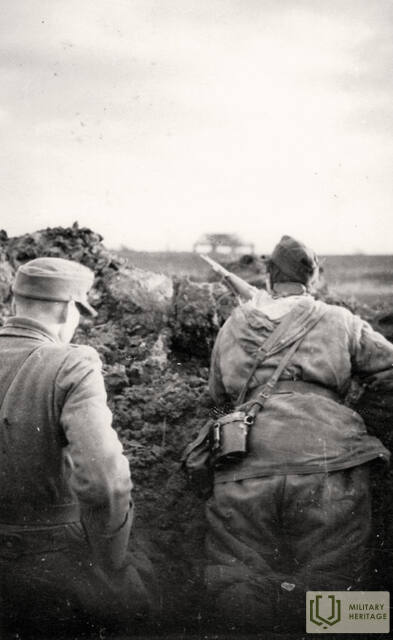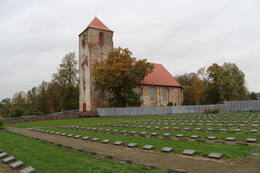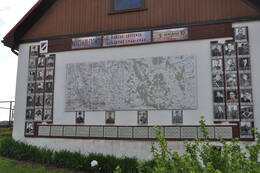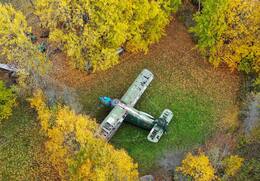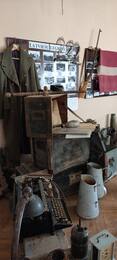Latvijos legiono 42-ojo pulko kuopos vado Vernerio Preijerio prisiminimai apie Kuršo mūšius.
Kuršo tvirtovė buvo suformuota po Rygos žlugimo 1944 m. spalio 13 d. ir Rusijos proveržio į Kaliforniją spalio 10 d., taip nutraukiant sausumos eismą su Vokietija.
(..) Kuršo mūšiai buvo tokie nuožmūs ir dažnai neaiškiomis, sudėtingomis sąlygomis, kad kiekviename mūšyje tekdavo improvizuoti, dažnai rizikuojant, prieštaraujant visuotinai priimtiems karo principams. Kas pasiteisino viename mūšyje, neveikė kitame. Griežtas ir nekintantis liko tik vienas principas – tai, kas vadinama kareivio morale. Visa Kuršo tvirtovė, bet ypač mūsų 19-asis pulkas, taip pat, žinoma, 106-asis Grenadierių pulkas taip pat laikėsi šio principo. Kai jaunystėje įstojau į Latvijos kariuomenę, be daugelio kitų kareiviui būtinų savybių, jie pirmiausia paminėjo moralę ir moralinę stiprybę. Prireikė šiek tiek laiko, kol iki galo supratau, ką iš tikrųjų reiškia šis savybių kompleksas. Ši sąvoka nėra visiškai tokia pati, kaip ji suprantama civiliame gyvenime arba ką kapitonas Līdumas vėliau apibūdina kaip „tyrą ir begėdišką“ gyvenimą, kaip priešingą, panašų gyvenimą paminėdamas persivalgymą, persivalgymą ir kūniškus troškimus. (..)
(..) Ilgą laiką turėjome griežtą šaudmenų limitą – 5 šoviniai vienam kulkosvaidžiui. Tačiau kiekvienas kulkosvaidininkas gerai žino, kad su 5 šoviniais sunku patikrinti, ar kulkosvaidis veikia, kaip dažnai daroma keičiantis postams. Nebuvo taip, kad neturėjome šaudmenų, skirtų kritinėms akimirkoms. Rimti karininkai man sakė, kad apskritai Kuržemėje šaudmenų užteko mėnesiui ar šiek tiek ilgiau. Tačiau aiški priežastis rodė, kad pabaiga netoli, nors buvome nusprendę kovoti iki galo, tada pamatysime. Vokiečių leitenantą Sarume pradžiugino tik tai, kad jis ir, manau, kiti taip pat mumis pasitikėjo – latviais. Iš tiesų buvo į ką atsiremti, ir šį 6-ąjį svarbų mūšį, vieną sunkiausių mūšių Kurže, kaip sakė pulkininkas leitenantas Kociņšas, laimėjome mes, paskutiniai Kuržemės legionieriai, paskutiniai iš XIX a. (..)
Susijusi laiko juosta
Susijusios vietos
Kuržemės įtvirtinimų gynėjų atminimo akmuo
Įsikūręs Tukumo rajone, A9 greitkelio pakraštyje, 500 m nuo posūkio į Lesteni Rygos kryptimi.
Memorialas buvo įkurtas 1991 m. netoli Rumbu namų, kurie buvo aktyvių karo veiksmų vieta. Tai duoklė „Kuršo tvirtovės“ gynėjams, kovojusiems su Raudonąja armija Antrajame pasauliniame kare. Mūšiai buvo reikšmingi, nes laikinai sustabdė Raudonosios armijos įvykdytą visišką Latvijos okupaciją. Maždaug 300 000 latvių emigravo, bėgdami nuo sovietų režimo įvykdytų nusikaltimų prieš civilius gyventojus.
Antrojo pasaulinio karo pabaigoje Latvijos teritorijoje susiklostė savotiška situacija. Kurše buvo dislokuotos Vokietijos armijos pajėgos, kurias Raudonoji armija bandė eliminuoti arba neleisti dalyvauti mūšiuose Rytų Prūsijoje ar aplink Berlyną. „Kuršo tvirtovė“ yra dažniausiai vartojamas terminas, apibūdinantis karo veiksmus Kurše nuo 1944 iki 1945 m. „Kuršo mūšis“ buvo Vokietijos armijos kova, siekiant atremti didžiulius Raudonosios armijos išpuolius. Kuršo tvirtovė nustojo egzistuoti netrukus po Vokietijos kapituliacijos.
Šiandien galite aplankyti memorialą ir poilsio vietą, kuri buvo populiari tarp Latvijos legionierių nuo pat Latvijos nepriklausomybės atkūrimo.
Lestenės brolių kapinės
Įsikūręs Tukumo rajone, Lestenėje, šalia bažnyčios.
Masinio kapo kūrimas Lestenėje pradėtas 1998 m. Tai antros pagal dydį karinės kapinės Latvijoje, kuriose palaidota daugiau nei 1300 Latvijos legionierių. Tik atkūrus Latvijos Respubliką atsirado galimybė perlaidoti Antrajame pasauliniame kare žuvusius Latvijos karius iš įvairių vietų.
Latvijos legionas buvo Vokietijos armijos kovinis dalinys, suformuotas daugiausia iš neteisėtai mobilizuotų Latvijos gyventojų. Kareiviai savo buvimą legione suvokė kaip kovą už Latvijos nepriklausomybės atkūrimą, nepaisant to, kad ji vyko Vokietijos ginkluotųjų pajėgų gretose, o Vokietija buvo okupavusi Latviją. Nebuvo jokios kitos karinės jėgos, kuri galėtų atidėti sovietų okupacijos sugrįžimą. Latvijos legionieriai kovojo prieš Raudonąją armiją, kuri likvidavo Latvijos nepriklausomybę, sunaikino jos armiją ir įvykdė nusikaltimus prieš civilius gyventojus. Vokietijos armijos gretose kovojo apie 110 000–115 000 kareivių, apie 30 000–50 000 iš jų žuvo mūšio laukuose.
Šiais laikais Lestenėje galite aplankyti Brolių kapą, šalia kurio stovi Lestenės bažnyčia. Tai išskirtinis baroko sakralinio meno pavyzdys. Senovinėje bažnyčios smuklėje galite susipažinti su paroda, skirta Latvijos legiono istorijai. Centrinį brolių kapo atvaizdą „Tėvynė – Motina – Latvija“ sukūrė skulptorė Arta Dumpė. Netoliese yra Lestenės dvaras, kuris iki Antrojo pasaulinio karo priklausė Latvijos armijos generolui Mārtiniui Hartmaniui.
Ekskursijas po Lestenės bažnyčią galima užsisakyti pas Lestenės evangelikų liuteronų bažnyčios parapijos kunigą Inguną Kokiną, tel. +371 29993743.
Lestenės brolių kapinės, memorialinė ekspozicija ir bunkeris
Lestenės brolių kapinės yra Tukumo savivaldybėje, Lestenėje, šalia Lestenės bažnyčios. Brolių kapinių Lestenėje statyba pradėta 1998 m. Tai antros pagal dydį karinės kapinės Latvijoje, jose palaidota daugiau nei 1300 Latvijos legionierių. Tik atgavus nepriklausomybę atsirado galimybė perlaidoti Antrojo pasaulinio karo metu žuvusius Latvijos kareivius. Latvijos legionas buvo Vokietijos armijos kovinis dalinys, sudarytas daugiausia iš nelegaliai pašauktų latvių. Kareiviai savo buvimą legione laikė kažkuo, ką reikia padaryti norint atkurti Latvijos nepriklausomybę, nepaisant to, kad jie tarnavo Vokietijos ginkluotosiose pajėgose ir kad Vokietija buvo okupavusi Latviją. Latvijos legionieriai kovojo prieš Raudonąją armiją, kuri sunaikino Latvijos nepriklausomybę ir jos armiją bei vykdė nusikaltimus prieš civilius gyventojus. Vokietijos armijos gretose kovojo nuo 110 000 iki 115 000 kareivių, o apie 30 000–50 000 iš jų niekada nepaliko mūšio lauko. Brolių kapinių pagrindinę temą „Tėvynė – Motina – Latvija“ sukūrė skulptorė Arta Dumpė. Kitoje kelio pusėje, buvusiame smuklėje, įrengta ekspozicija, skirta Latvijos legiono istorijai. Šalia jos Latvijos karininkų asociacijos vyrai, vadovaujami kapitono Jānio Slaidinio, pastatė požeminį bunkerį, kuriame parodyta, kaip kareiviai ir karininkai gyveno fronto linijose.
Kuržemės tvirtovės muziejus Zante
Bus atidaryta nuo gegužės 1 d.




